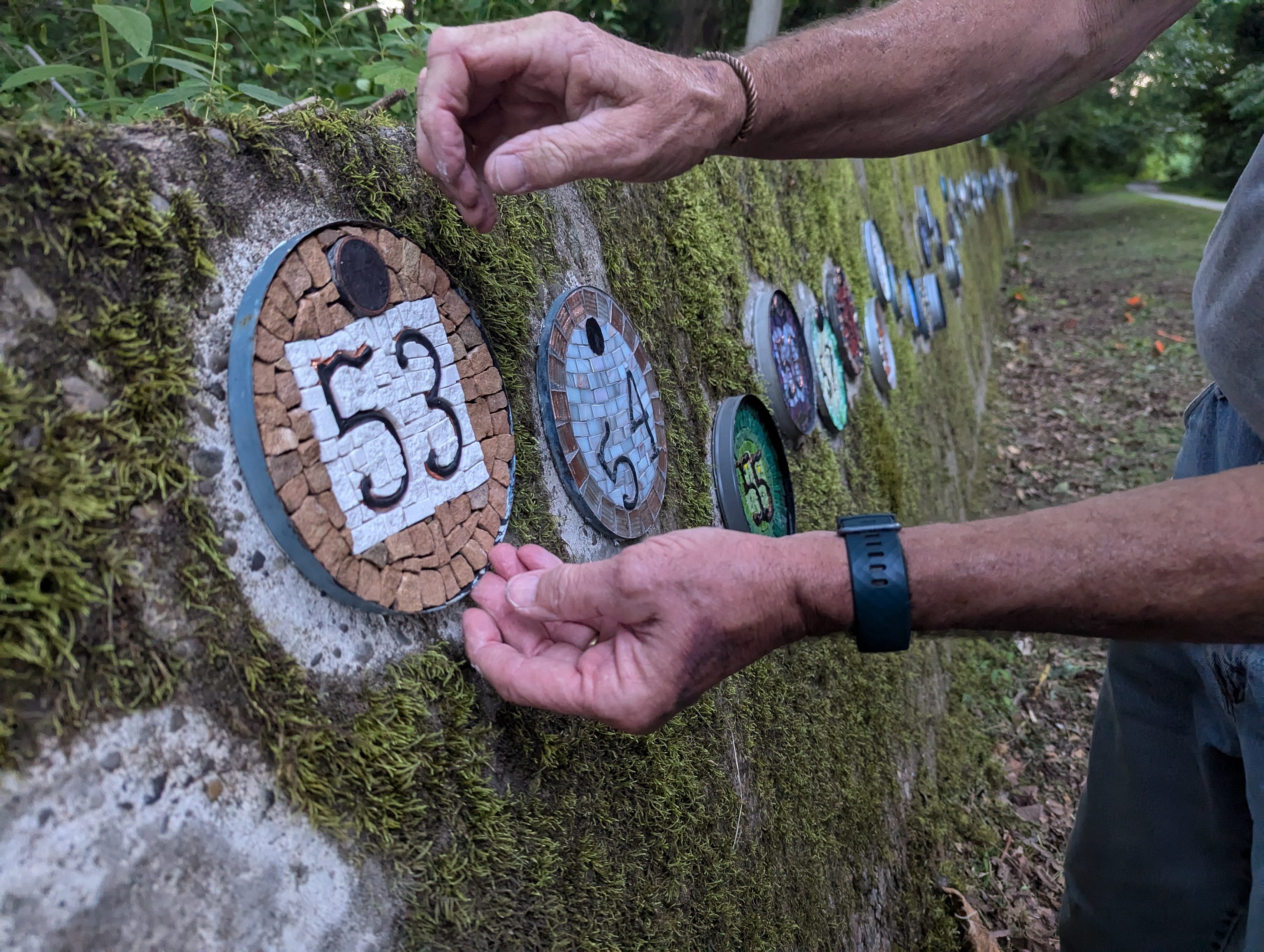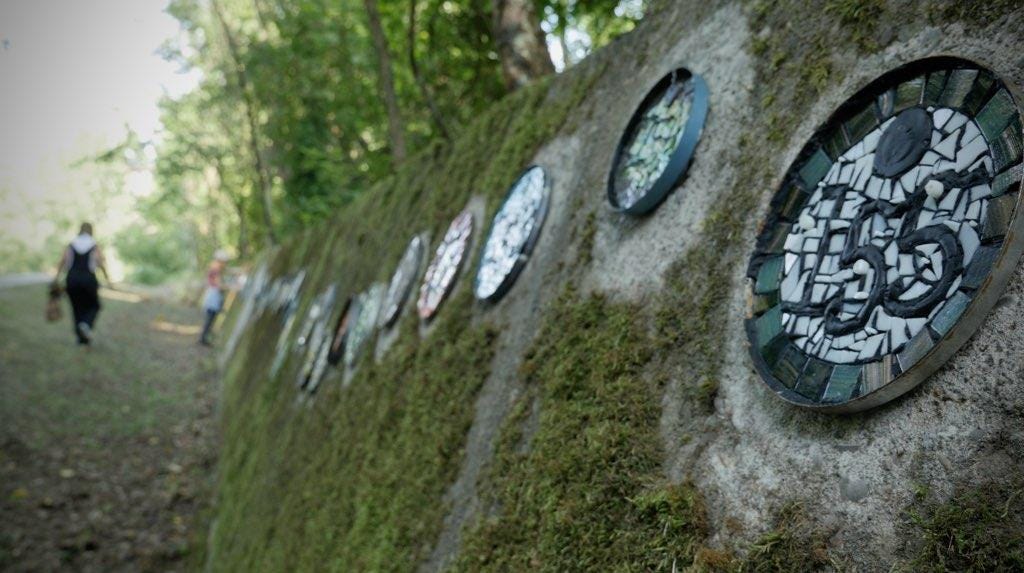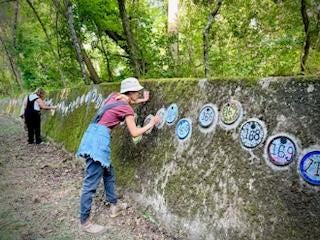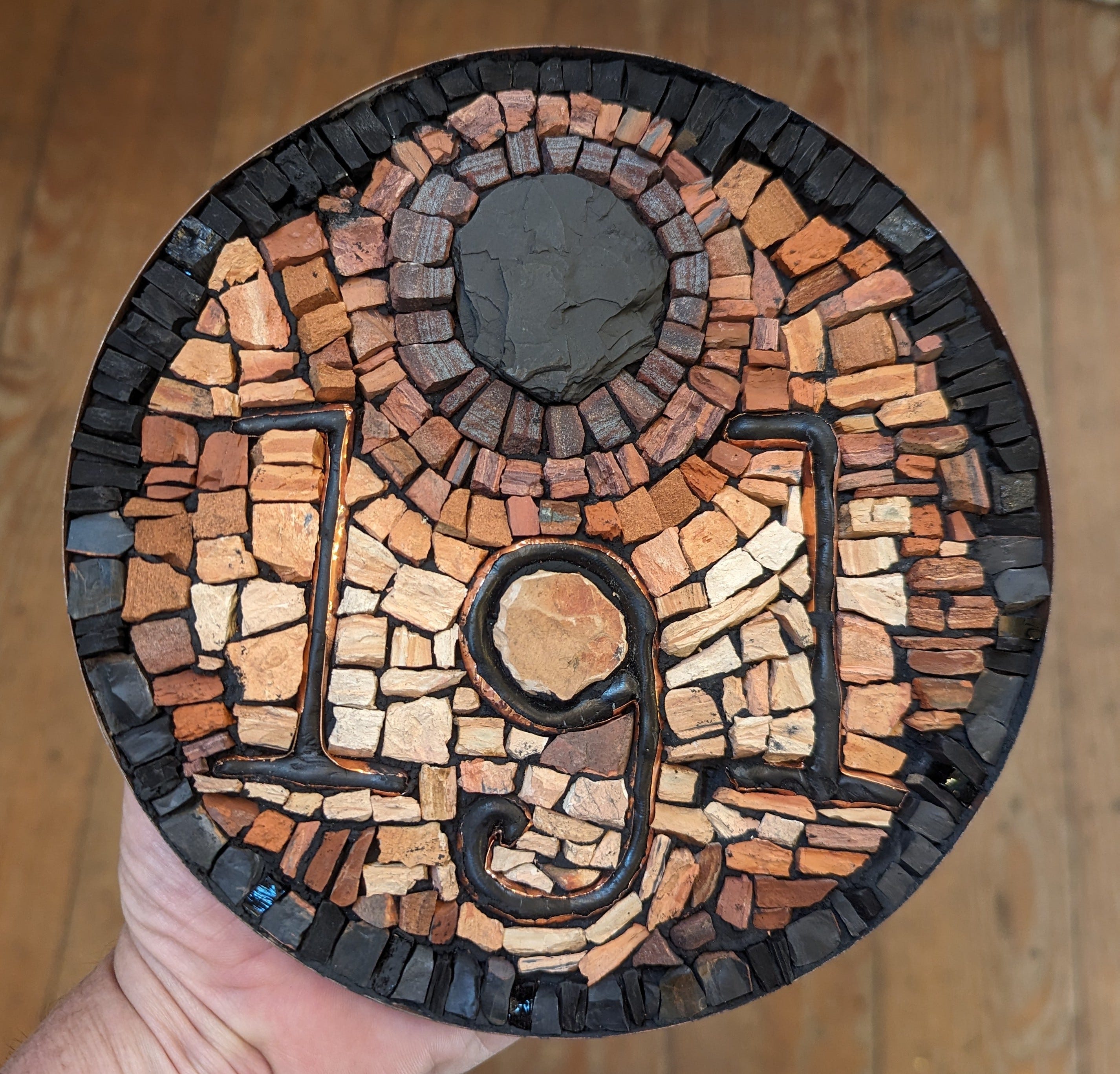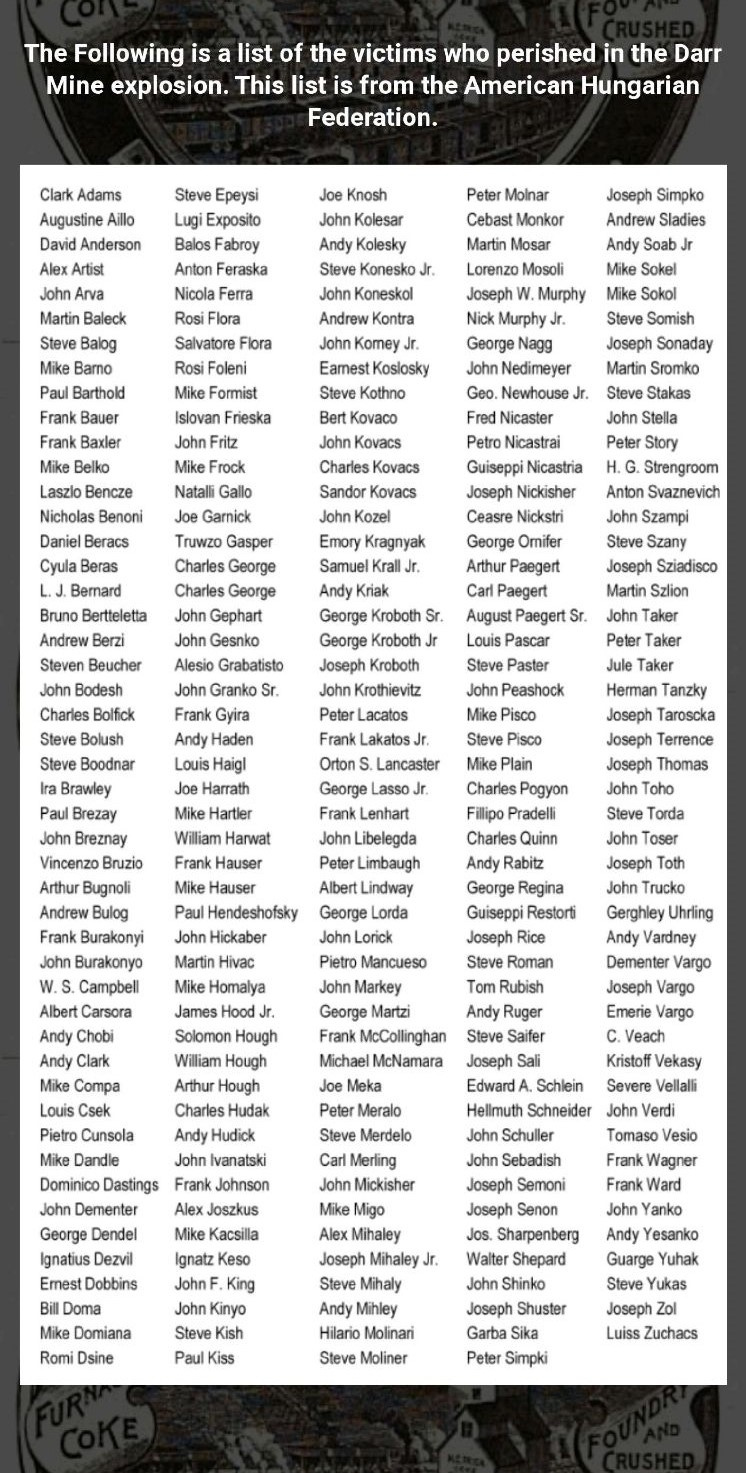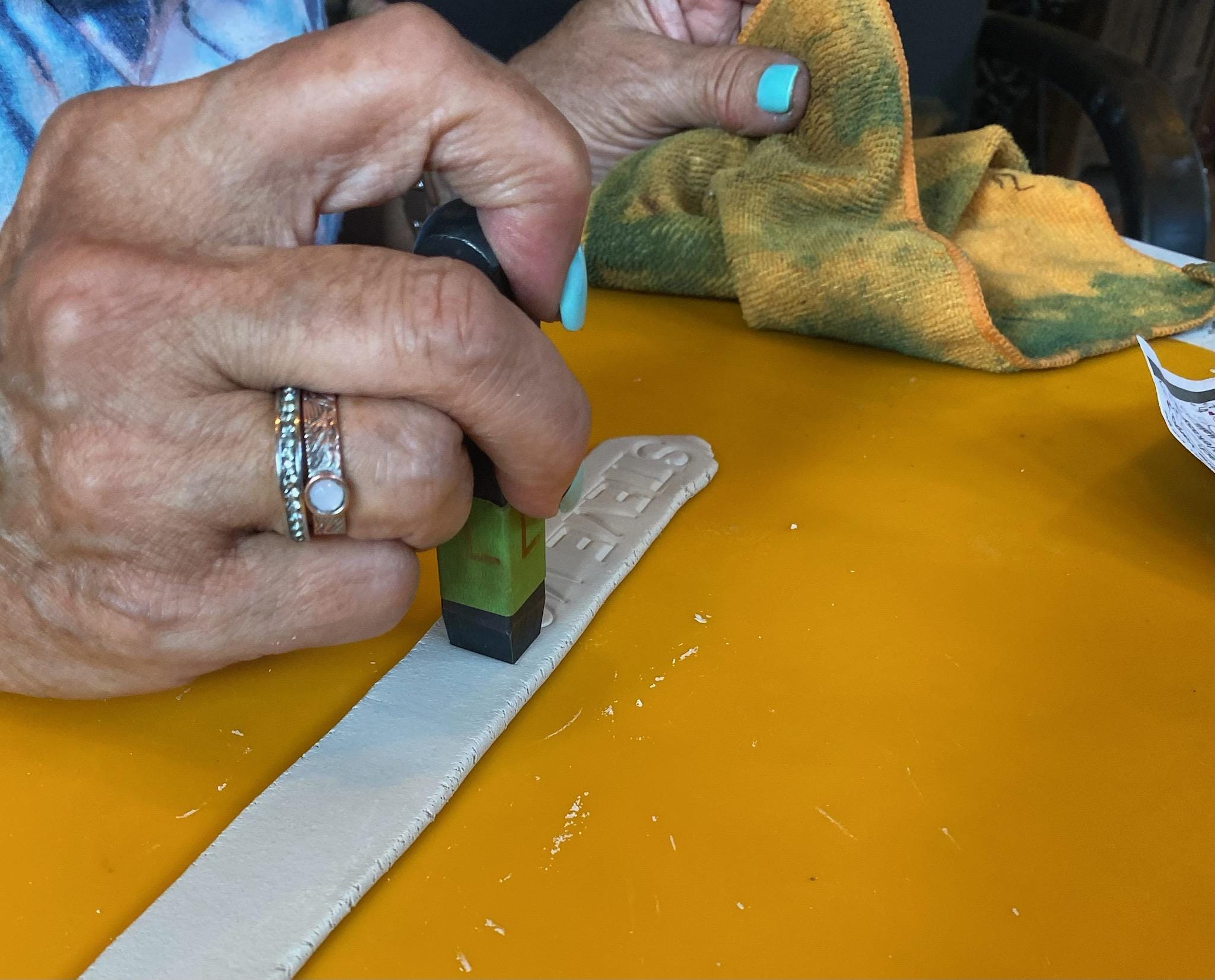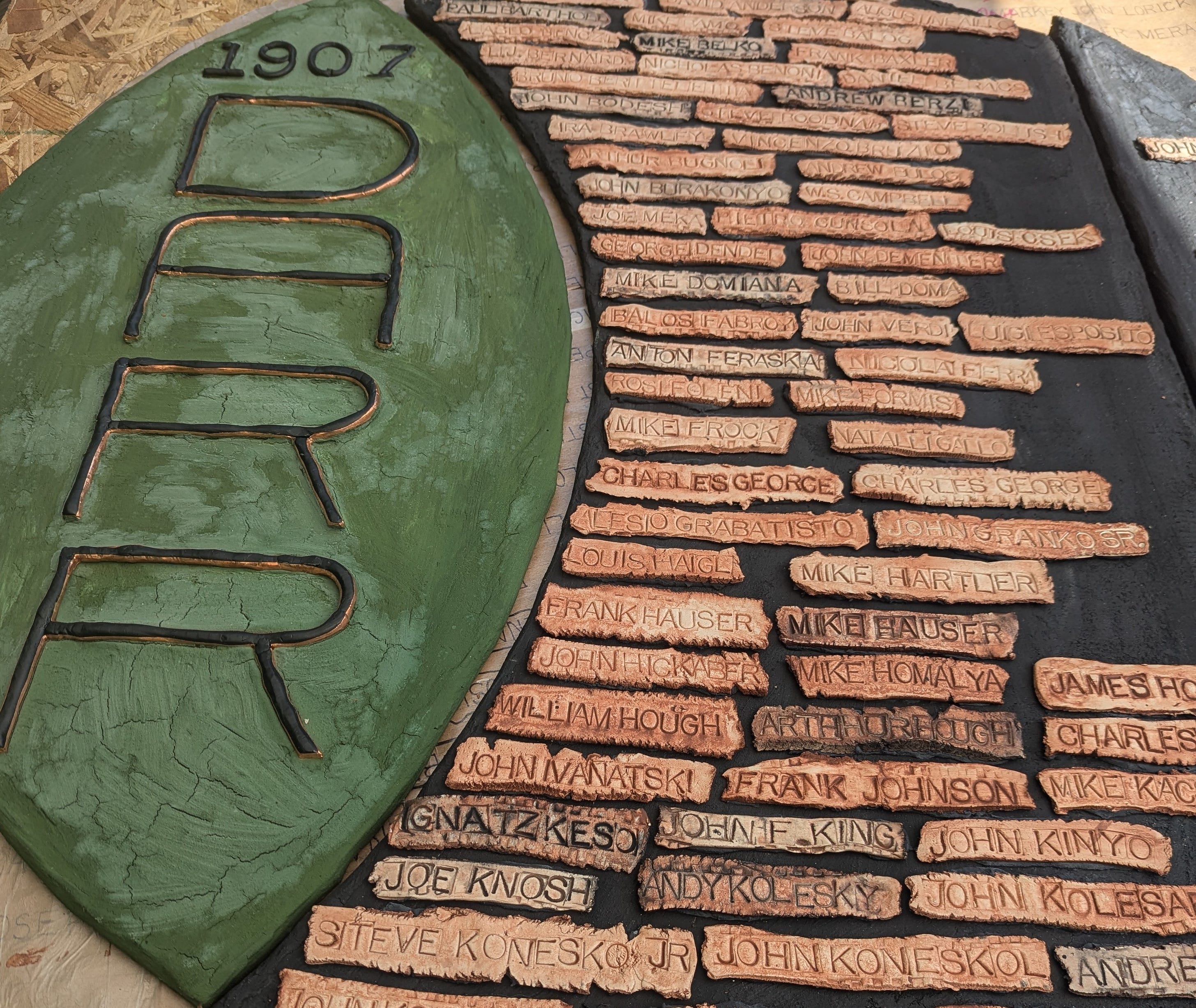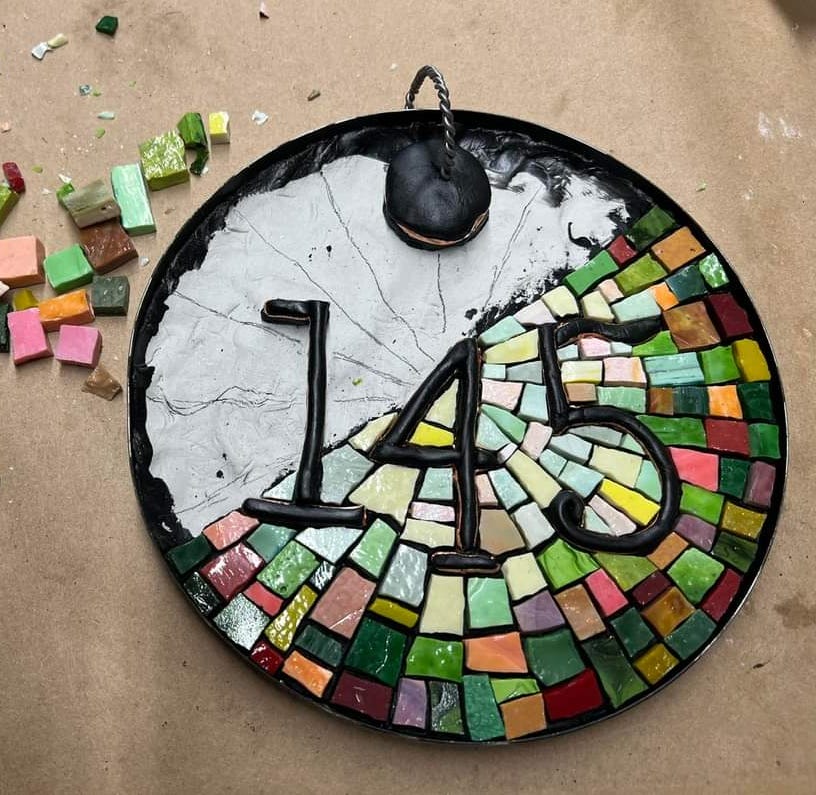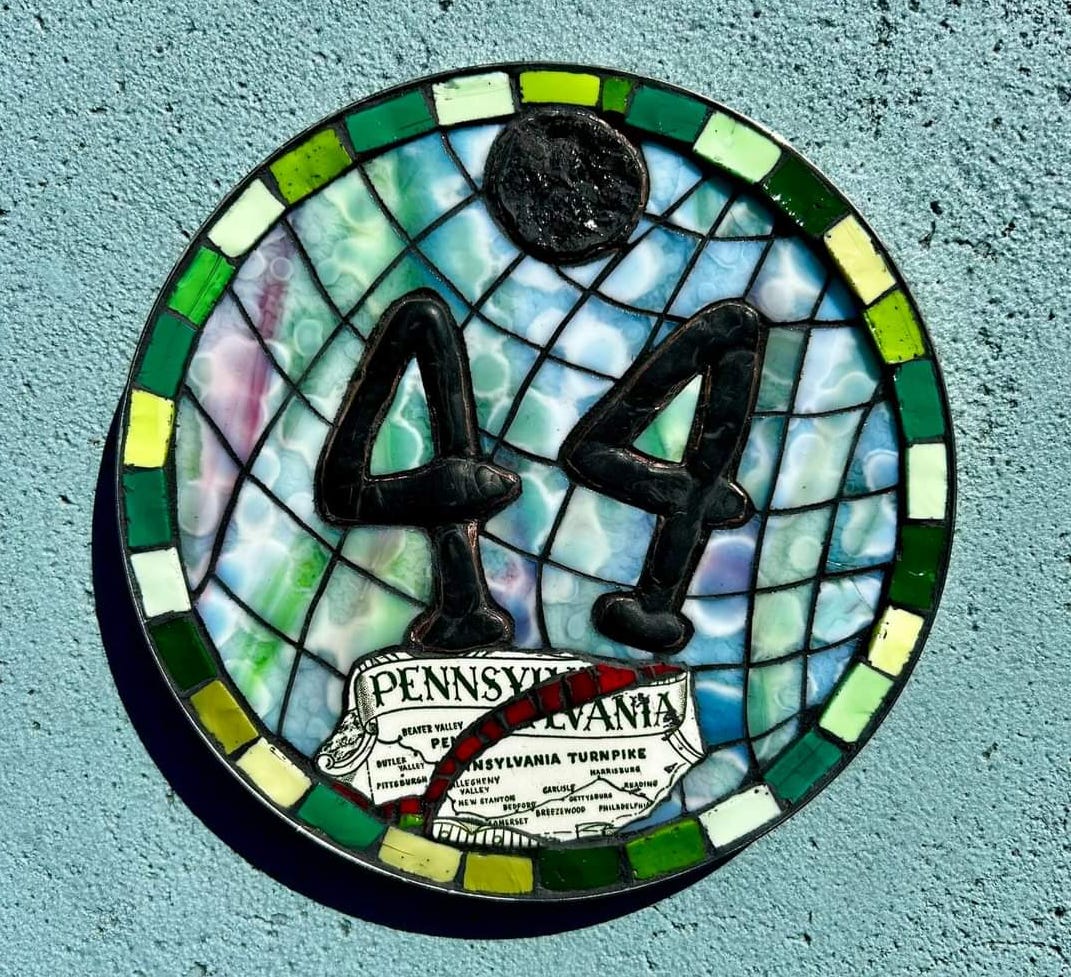The Art of the Lost Story
06-26-2024
The Art of the Lost StoryThe Unveiling of The Darr Mine Memorial Project and a new Ruins Podcast Episode
You may have noticed. I have been quiet. Like the child left alone with the magic marker in a room full of white walls, you should always worry when things go silent. Happily, the art that has been created in this quiet window is not destructive scribbling. But it is art that falls into the category of careful graffiti. And the guerilla mosaicking that is The Darr Mine Mosaic Memorial compliments this month’s episode of The Ruins Podcast perfectly. Episode #32 is ready to watch and listen with my special guest, Ron Nash, president and C.O.O. of Laticrete International. Ron is a rare human with the gift of being able to thrive in two worlds; the creative and the corporate. I had so much fun listening to his stories. I hope you do too. You can watch this short clip below which I know will make you want to watch/listen to the whole episode HERE. The lost story brought to life through art that you are about to read would not have been possible without the miraculous Latapoxy 310 Stone adhesive made by the innovative scientists at Laticrete. Most stories get lost.The broom of time has a way of brushing away their sharp lines until all that’s left are traces and whispers. Most of us pay attention to the moments to which we are born. Or we worry about the moments just around the corner. But some of us are pulled back into the mysteries of the past. And the best of us believe that understanding the past is the way to survive the future. I believe in the power of lost stories. I hope you will join me as I announce a just unveiled project that has been years in the making. Somewhere around mile marker 106 on The Great Allegheny Passage, there is a small granite marker shaped like a chunk of coal. If your situational awareness is low, you will miss it. You will sweep right by ground zero of the largest, most devastating coal mine disaster in Pennsylvania history. And it is only 1.5 miles from The Ruins. The Darr Mine explosion killed 239 men on the morning of December 19th,1907.Say that sentence out loud to yourself. We have been repeating it at The Ruins for almost a decade. It’s what the little trailside marker says. It’s what you will find buried deep in obscure online coal history forums. Its the kind of story that, after you hear it, makes you wonder why you haven’t heard it before. The Darr story needs more telling.When I am deep into reading the details of how hundreds of Hungarian immigrants were at church on the morning of December 19th because it was St Nicholas day, their orthodox holiday, I know it needs more telling. They lived because they were in church pews and not underground. When I read about father and sons, nephews and uncles, so many with matching last names on the death lists, I know it needs more telling. When I read the newspaper excerpts of the just-made widows wailing over coffins. The mass graves in tiny cemeteries too small to hold the rush of coffins. When I soak in the details of the Darr, I wonder at how its story is not a giant Oscar-winning movie. Or a David McCollough sized book. I wonder why the whole world has not heard the name DARR. Details like this: Bertteletta, Bruno (Italian Miner Boy, Trapper Boy ca.1907, Mine Check No. 534, Darr Mine, Westmoreland Co., PA, Age 15, single.); Not far from the site of the Darr is a 300ft long, low, moss blanketed concrete wall that runs parallel and just a few feet from the bike trail. Within sight of Stevo’s spellbinding Darr Deer Mosaic whose big eyes peer at you from behind the trees, high up on the water tower washing station of Banning #1. If you read my recent piece about how there is too much concrete in the world, titled Build Your Own Museum, you will understand my conviction to make art outside of the permission of the gatekeepers. Art that doesn’t need paperwork approval. My belly has been burning for ten years to create an image that communicates what 239 dead coal miners really means. Because saying it is too easy.
Good art captures you.It stops you in your tracks, compels you to stop moving, to just STOP. If you are biking from Pittsburgh, your experience will start by seeing the numbers 1,2,3, 4 etc. If you are biking from the Cumberland direction, you will start counting from the other end…239, 238, etc. You will wonder, what are all these beautiful numbers about? And that is the moment, right there, that the Darr story captures you. It makes you ask. That is the beginning of wanting to know more. When you reach the middle of the installation, you will see two much larger circles and realize they are a giant list. The anonymous team has stamped every letter of every name into tiny clay plaques. Numbers and names. Smalti, stone, old Pennsylvania plates, 23karat gold next to Darr coal, red-dog and river stone. Helga Maribel Sanchez, the lead artist of The Darr Memorial Mosaics, and I have spent the past year designing, building, juggling numbers, and finally installing a conceptual, site-specific installation that will capture the attention and imagination of every cycler and traveler that passes by the wall. The working team of fifty two anonymous artists have built 239 individual mosaic circles with numbers inside each. Vintage film canisters as substrate/frames give the impression of the little stamped miner’s tags that we find in the dirt around The Ruins. The invitation to be anonymousAfter the idea crystallized of how much work it would be to build 239 separate mosaics, we began the process of building a team. My first request, after explaining the concept, was to ask each artist how they felt about staying anonymous, possibly forever. No credit. No money exchanged for hours worked. This project would be symbolically a tiny sacrifice. A small nod of respect to the ultimate sacrifices of the Darr. A trade of anonymity you might say. Ours for theirs. To my continued astonishment, every single invited artist agreed to anonymity without hesitation. And with great enthusiasm. We live in a world where everyone wants credit. And mostly, credit is important. But the Darr artists will remain nameless. For now. Because these are the names that need to be spoken aloud. These are the names that deserve the spotlight. This week has been full of after dark installations, black thin-set covered fingers, and quite a bit of realizing that this project is too much. Too much work. Too much bittersweet emotion at having been born into a time and a place that does not require us to risk our lives to make a living. It is close to impossible to experience the Darr mosaics through photography, although it will be a photographers dream destination. You simply must visit them in person to understand the scale. Whether by bicycle or on foot (because their mile marker #106 on The Great Allegheny Passage is not accessible by car). You can park at the tiny, four car dirt lot near Van Meter, turn right on the trail and walk the several hundred yards to them. Or approach them from The Ruins and Sager Mosaics direction which is 1.5 miles away. You can expect much more writing, photography, and video from the brand new Darr Memorial. This is just the beginning of their story in mosaic.
Many other good people have been working on telling the Darr story. You can learn so much more by clicking any of the below links. The Darr Mine Documentary This half hour little movie gives deeper context to the story. Beautiful and heartbreaking to experience. The Rostaver Historical Society is doing great things for our local history and their knowledge of the Darr is deep and they give regular talks that are well worth attending. The American Hungarian Federation is where we found our list of names. There are differing opinions by researchers on the final number of dead. The true number may never be known. Thank you for being here as I keep digging for optimism. Some days with a hammer. Some days with a shovel. And some days with a pen. |


